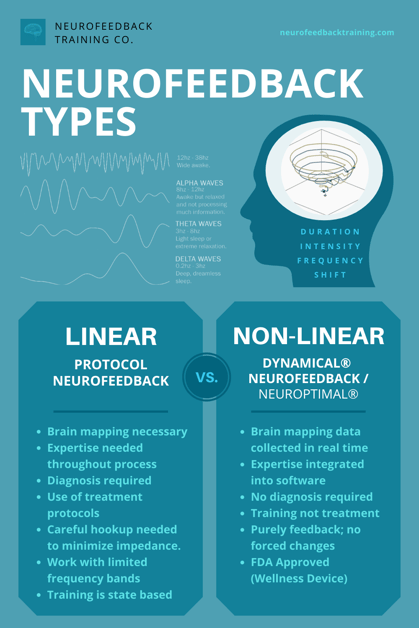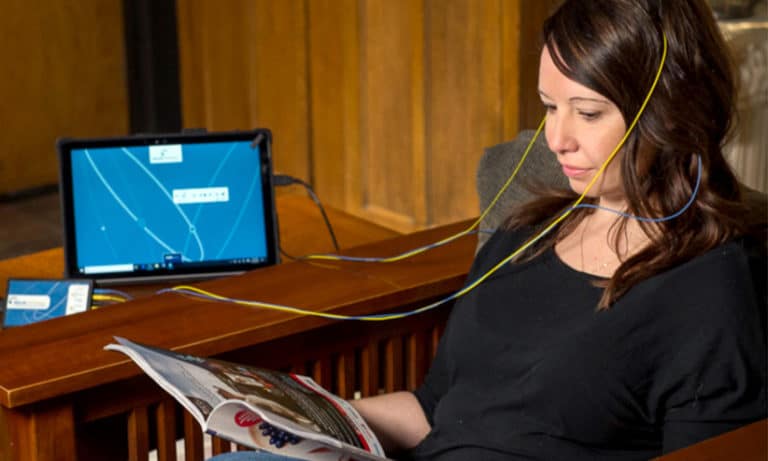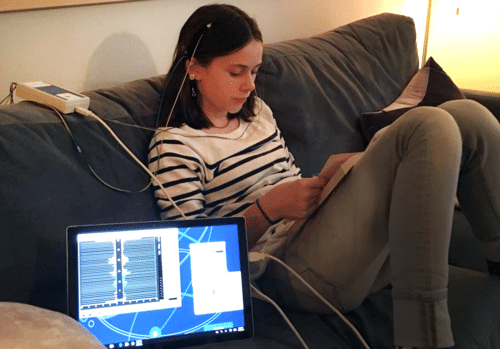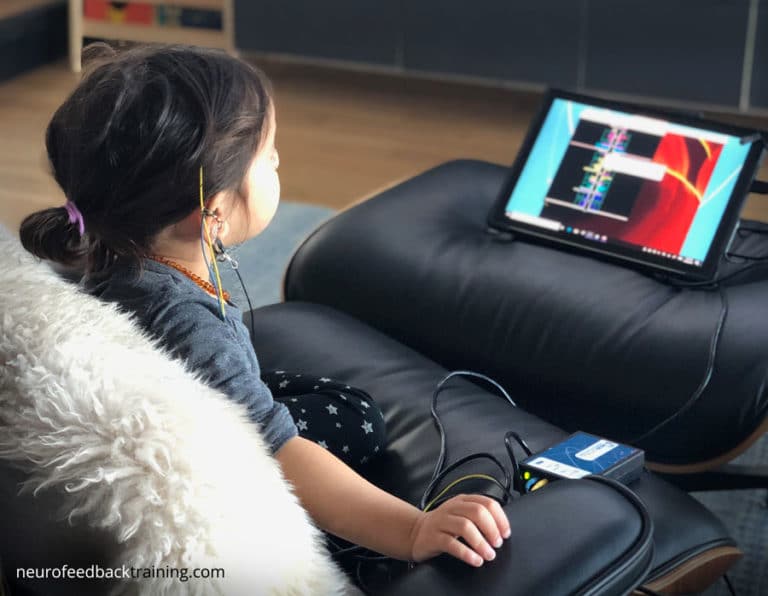NeurOptimal® neurofeedback sessions at home is possible when renting or buying the equipment. Learn how it works and what the benefits are.
Is neurofeedback safe to do at home?
Not all neurofeedback devices are the same. Learn why some neurofeedback systems are safe for home training, while some are not.
Throughout the COVID-19 Pandemic, we’ve seen a sharp increase in the number of inquires asking if neurofeedback can be done at home or if it can only be administered in an office by a trained technician. The answer is yes it can be done at home safely, but only certain devices have the capability. Specifically, the neurofeedback devices that are fully automated are the best for home brain training because you do not need to rely in a remote trainer.
Before going into the specifics of which systems, first there is a short overview of the field of neurofeedback and the technological advances made in the last 30 years. Then, on to the subject of how to brain train at home. Lastly, take a look at the most commonly asked questions about neurofeedback in 2020.
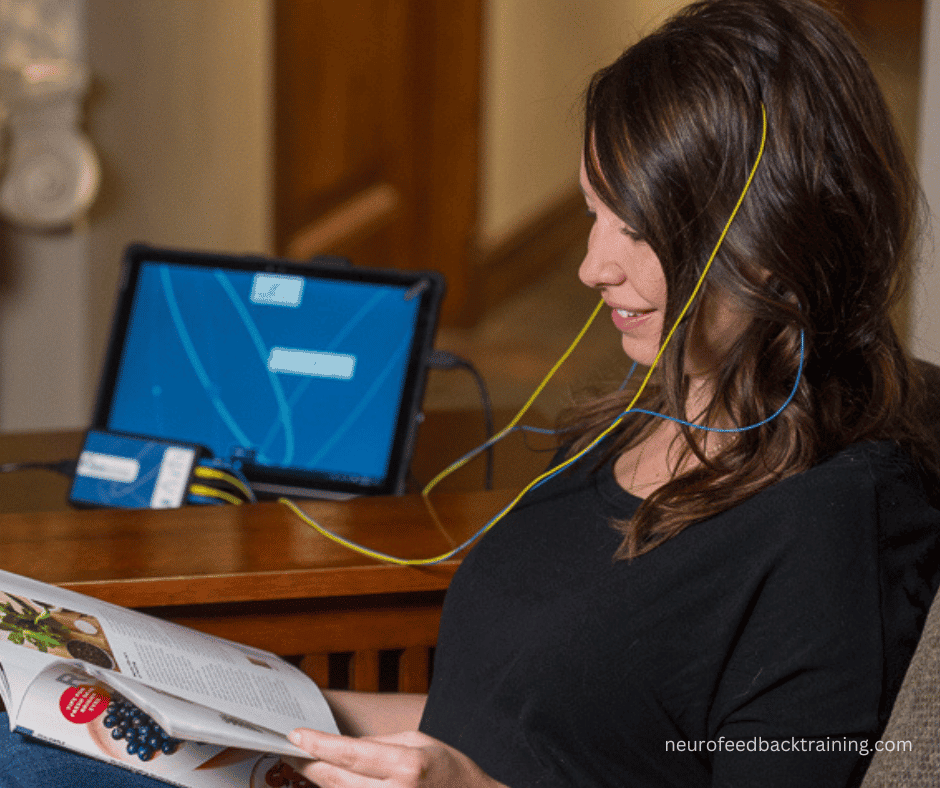
What Is Neurofeedback?
Neurofeedback, also called neuro-biofeedback, is a term that describes a process of giving feedback to the individual about brain functioning to then be able to make changes and improve the brain’s operations. Most commonly, changes in functioning is measured by the brain’s electrical activity, or brain waves. The brain communicates through electrical impulses and chemical reactions. Most neurofeedback devices tracks the changes in electrical frequencies.
To be an informed consumer it is important to understand that neurofeedback is a broadly used term in the brain training industry. Some companies refer to their technology as “neurofeedback” when it neither collects the brain’s electrical activity nor provides feedback!
Similar to how biofeedback collects data about the brain indirectly through heart rate and skin temperature, neurofeedback is the process of collecting the brain’s electrical communication through some data-collection device, most commonly EEG sensors and leads attached to the scalp.After measuring the electrical output, the data is fed into an amplifier and the voltage is given numerical values. Those numbers are then read by complex software to look for brain activity changes. Based on the design of the particular device’s software, that data is used to provide feedback through auditory or visual cues, or both.
Based on the type of system, the feedback is used to condition the brain to shift out of the mal-adaptive brainwaves to more adaptive ones, or is used to cue the brain’s organic self-balancing abilities. More on the different designs below, but first to review what is and isn’t a neurofeedback device (that would make it more or less effective for change).
What to look for in a true neurofeedback system
A device is truly a neurofeedback system if it includes:
- measuring brain activity, most commonly through Hz frequencies
- a software program to read and interpret that activity
- a system of feedback to alert the individual’s brain to its activity
A device is not neurofeedback if:
- it does not measure the brain’s electrical activity
- there is no software interpreting the data in real-time
- it does does not give feedback but rather adds something to the individual, the most common being micro-current stimulation to the scalp or neck.
Which neurofeedback system is best?
As mentioned in the introduction, if you want to do neurofeedback training at home the best is the fully automated system, which is the most recent advancement in the technology.
When neurofeedback devices were first created personal computers were not fast enough to operate at the speed of the human brain. As a consequence there needed to be an intermediary between the brain’s output and the feedback.
This design is the first generation of neurofeedback where the trainer read the brain wave patterns of the client and assessed which ones were maladaptive and creating symptoms. The trainer then set protocols to entrain and migrate the brain to reset to adaptive brain waves.
How many types of neurofeedback are there?
There are two types of neurofeedback systems available today; Protocol (linear) and Dynamical (non-linear) neurofeedback.
Linear neurofeedback that require brain mapping often conflict with regular brain processes and override normal function in order to achieve desired results which can cause undue stress and exhaustion on the brain. Dynamical neurofeedback is all auditory and does not force the brain in any specific direction. Instead, the pauses in sound encourage the brain to function differently than it has been, but it’s up to your own brain to decide how it will correct itself. Unlike protocol systems, the dynamical neurofeedback type does not come with any treatment protocols so the system is custom fit to your brain’s needs with each training.
WhAT IS Protocol Neurofeedback?
Neurofeedback Type: Linear
The first generation, Protocol neurofeedback, can only be used in-office. The expert trainer uses brain mapping to set targets for adjusting the brain’s frequencies during the training sessions. Then the trainer reassess periodically to see if adjustments need to be made to the targets. The trainer may use additional brain maps or client reports to know if new targets are needed. Adjustments may also be required if the client reports discomfort or unwanted changes, such as feeling more agitated.
Of the protocol-based systems there is one system, BrainPaint, which does allow home training, however, it requires the remote oversight by a trainer to monitor if the targets are correct.
Besides the technological limitations as a constraint in the design, protocol or linear systems are based on a slightly different theory of brain health than the newer fully automated system, based on a non-linear design.
The older theory of brain health was that you needed the external expert deciding how the individual brain waves needed to change in order for symptoms to resolve. The process was to entrain and migrate, a form of conditioning, and through that ‘nudging’ the brain would shift brainwaves to reflect that of a ‘normal’ brain.
The limitations are that it assumed a linear model for a non-linear system (the brain). Though helpful, the trainer constantly needs to be reseting and refining the feedback for the trainee’s brain so as to continue to see positive shifts and to prevent over training.
The majority of brain training devices are first generation protocol neurofeedback systems, and because there needs to be on-going assessment and resetting of protocols these systems are only used in an office setting and therefore neurofeedback sessions at home are not appropriate.
What Is Dynamical Neurofeedback
Neurofeedback Type: Non-linear
The latest generation of neurofeedback, called Dynamical Neurofeedback™, changed the design as the hardware technology improved. The intermediary was removed because the speed of computing power reached that of the brain so the feedback could happen in real-time.
Updating the device design is an important feature when it comes to brain training because the field of brain health and wellness is ever changing and refining. As new information emerges about how the brain functions and, more importantly, how the brain heals itself through the process of neuroplasticity, the technology needs to change as well.
The second generation of neurofeedback has built-in software that communicates in real-time with the brain using dynamical, nonlinear mathematics. This system is fully automated and has removed the expert trainer, and replaced it with the true expert: the individual’s brain. Therefore neurofeedback sessions at home is now possible.
Let’s use the analogy of automobile technology to understand the history of neurofeedback: the first generation of cars had a manual crank starter, then we moved to a key and now we press a button to start the car. The latest technological leap is self-driving cars. In much the same way, neurofeedback technology advances as computer power increases. Over the decades, it has made leaps in how it operates and who can run sessions. Most recently, it has made the leap to automation.
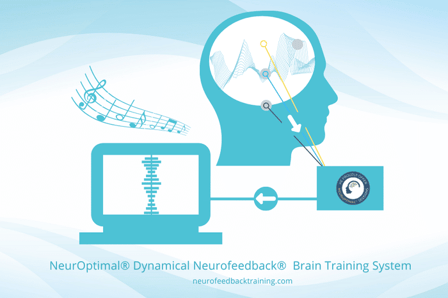
Currently the only fully automated system is NeurOptimal®, made by Zengar Institute. Their system became fully automated in 2010 and in 2018 the FDA designated NeurOptimal® as a General Wellness Product.
The NeurOptimal® system is the device we use for both in-office sessions and as home neurofeedback rentals because it is so easy to operate we know clients will be running safe and effective sessions on themselves and family members.
Because the technology creates a brain map millisecond by millisecond to be used to determine what needs to be optimized, each person training receives exactly the feedback their brain needs. Each session will be unique to the person’s symptoms, as well as their changing needs from session to session.


